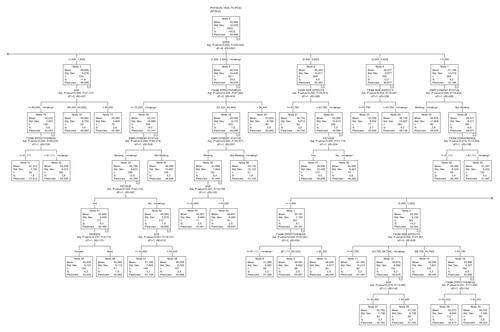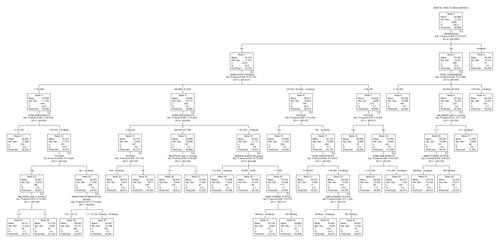Figures & data
Table 1 Patient Characteristics (N=2990)
Table 2 Health-Related Quality of Life (SF-36) Score Distributions in Patients on First-Line Treatment (N=2990)
Table 3 Rank Correlation Results for Treatment Satisfaction and Health-Related Quality of Life (N=2990)
Table 4 Cross-Sectional Predictors of Physical Health and Mental Health Domains: Multivariate Regression Analyses (N=2990)
Figure 1 Regression tree for the Physical Component Summary (PCS).
Notes: The tree was recursively grown based on the restriction of a minimum node size of 50 and a maximum number of 5 tree layers. Variables included: TSQM effectiveness, TSQM side effects, TSQM convenience, type of medication (DMT), number of medication changes, duration of medication intake, disease duration, disease course (CIS, RRMS), EDSS, relapses in the last 12 months, fatigue, depression, gender, age, currently living with a partner, employment status.

Figure 2 Regression tree for the Mental Component Summary (MCS).
Notes: The tree was recursively grown based on the restriction of a minimum node size of 50 and a maximum number of 5 tree layers. Variables included: TSQM effectiveness, TSQM side effects, TSQM convenience, type of medication (DMT), number of medication changes, duration of medication intake, disease duration, disease course (CIS, RRMS), EDSS, relapses in the last 12 months, fatigue, depression, gender, age, currently living with a partner, employment status.

